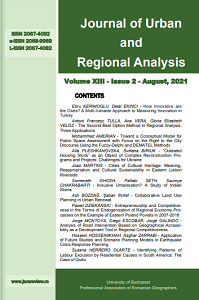APPLICATION OF FUTURE STUDIES AND SCENARIO PLANNING MODELS IN EARTHQUAKE CRISIS RESPONSE PLANNING
APPLICATION OF FUTURE STUDIES AND SCENARIO PLANNING MODELS IN EARTHQUAKE CRISIS RESPONSE PLANNING
Author(s): Hossein Hosseinikhah, Asghar ZarrabiSubject(s): Physical Geopgraphy, Policy, planning, forecast and speculation, Rural and urban sociology
Published by: Editura Universitară
Keywords: earthquake; future studies; scenario planning; Boyer-Ahmad County;
Summary/Abstract: Future studies and scenario planning models have been applied in this investigation to formulate a useful planning for earthquake crisis response in Boyer Ahmad County, Iran, located on active faults. The objective of this study is to evaluate the vulnerable areas of urban and rural settlements, to identify the factors of casualties and losses, and to formulate the most desirable scenario in order to increase the resilience of the settlements in earthquake crisis. In this research, the vulnerable areas were detected by using the spatial analysis in ArcGIS. Cross-impact analysis and MICMAC were employed to identify the effective thrusters to reduce the financial losses of the citizens. The most desirable scenario was formulated by the Morphol scenario planning. The results indicated that about 27% of the city and 261 villages out of 977 are vulnerable to the risk. To reduce earthquake losses, a preventive scenario was outlined in order to enhance the resilience of the settlements against the earthquake crisis.
Journal: Journal of Urban and Regional Analysis
- Issue Year: 13/2021
- Issue No: 2
- Page Range: 377-399
- Page Count: 23
- Language: English

